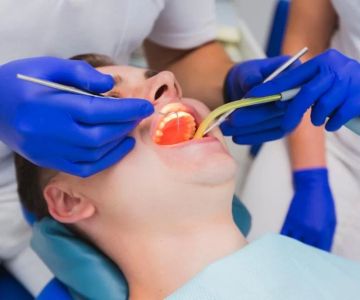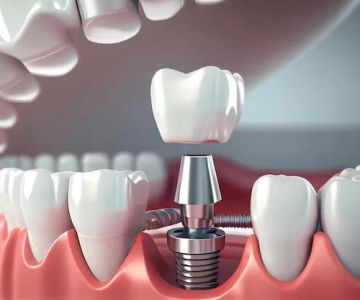Types of Dental Diseases and How to Prevent Them
- 1. Cavities and Tooth Decay
- 2. Gum Disease (Periodontal Disease)
- 3. Oral Cancer
- 4. Tooth Sensitivity
- 5. Bad Breath (Halitosis)
1. Cavities and Tooth Decay
Cavities, also known as dental caries, are one of the most common dental diseases worldwide. They occur when the enamel of your teeth is weakened by acids produced by bacteria in your mouth. These acids come from sugars and starches found in food and drink, which feed the bacteria that cause plaque buildup.
Over time, untreated cavities can lead to more severe issues, such as tooth abscesses, pain, and tooth loss. Symptoms of cavities include tooth sensitivity, visible holes or pits in the teeth, and discomfort when eating hot or cold foods.
Prevention: To prevent cavities, brush your teeth twice a day with fluoride toothpaste, floss regularly, and limit sugary foods and drinks. Regular dental checkups are also essential for catching cavities early.
2. Gum Disease (Periodontal Disease)
Gum disease is an infection of the tissues that support your teeth. It begins with gingivitis, which is a mild form of gum disease caused by plaque buildup at the gum line. If left untreated, gingivitis can progress to periodontitis, a more severe condition that can lead to tooth loss.
Symptoms of gum disease include swollen, bleeding gums, bad breath, and a receding gum line. In advanced cases, teeth may loosen, making it difficult to chew.
Prevention: To prevent gum disease, practice good oral hygiene by brushing and flossing daily. Avoid smoking and manage conditions like diabetes that can increase your risk of gum disease. Regular dental cleanings are essential for maintaining healthy gums.
3. Oral Cancer
Oral cancer includes cancers of the mouth, tongue, lips, and throat. While it is less common than cavities or gum disease, it is a serious and potentially life-threatening condition. Risk factors include tobacco use, excessive alcohol consumption, and HPV infection.
Early symptoms of oral cancer include sores or lumps in the mouth, persistent pain or tenderness, and difficulty swallowing or speaking.
Prevention: Avoiding tobacco and limiting alcohol consumption can reduce the risk of oral cancer. Regular oral cancer screenings during dental checkups are vital for early detection, which can significantly improve the chances of successful treatment.
4. Tooth Sensitivity
Tooth sensitivity occurs when the protective enamel of your teeth wears down, exposing the underlying dentin. This can lead to discomfort when eating hot, cold, or acidic foods. Tooth sensitivity is common and can be caused by various factors such as tooth decay, gum recession, or aggressive brushing.
People with tooth sensitivity may experience a sharp, shooting pain when consuming certain foods or drinks, which can be quite uncomfortable.
Prevention: To prevent tooth sensitivity, use a soft-bristled toothbrush and avoid brushing too hard. Additionally, using toothpaste designed for sensitive teeth can help reduce discomfort. If the problem persists, a dentist can recommend treatments such as fluoride applications or dental sealants.
5. Bad Breath (Halitosis)
Bad breath, also known as halitosis, is a common problem that can result from poor oral hygiene, dry mouth, or underlying health conditions. While it can be temporary, persistent bad breath may be a sign of a more serious dental or medical condition.
Common causes of bad breath include the buildup of bacteria on the tongue, gum disease, cavities, or an unclean mouth. Certain foods, such as garlic and onions, can also contribute to bad breath.
Prevention: To prevent bad breath, practice good oral hygiene, drink plenty of water, and clean your tongue with a tongue scraper or toothbrush. If bad breath persists, consult a dentist to rule out any underlying dental issues.







 Dental Solutions Market Street4.0 (576 review)
Dental Solutions Market Street4.0 (576 review) Mesa Valley Modern Dentistry4.0 (344 review)
Mesa Valley Modern Dentistry4.0 (344 review) Washington Square Dental4.0 (121 review)
Washington Square Dental4.0 (121 review) Gregg W Jepson DMD5.0 (7 review)
Gregg W Jepson DMD5.0 (7 review) Growing Smiles of Voorhees4.0 (2464 review)
Growing Smiles of Voorhees4.0 (2464 review) Metropolitan Endodontics4.0 (78 review)
Metropolitan Endodontics4.0 (78 review) The Importance of Oral Health Education During Pregnancy for a Healthy Pregnancy
The Importance of Oral Health Education During Pregnancy for a Healthy Pregnancy Best Tips for Brushing Your Teeth Properly for Healthy Gums: Essential Techniques for Oral Health
Best Tips for Brushing Your Teeth Properly for Healthy Gums: Essential Techniques for Oral Health Why Skipping Dental Checkups Can Lead to Bigger Oral Health Problems
Why Skipping Dental Checkups Can Lead to Bigger Oral Health Problems Advantages of Porcelain Dental Restorations
Advantages of Porcelain Dental Restorations How Can Diabetes Cause Tooth and Gum Problems? Preventing and Managing Oral Health Issues
How Can Diabetes Cause Tooth and Gum Problems? Preventing and Managing Oral Health Issues Healthy Habits for Promoting Good Oral Health and Hygiene: Tips for a Healthy Smile
Healthy Habits for Promoting Good Oral Health and Hygiene: Tips for a Healthy Smile